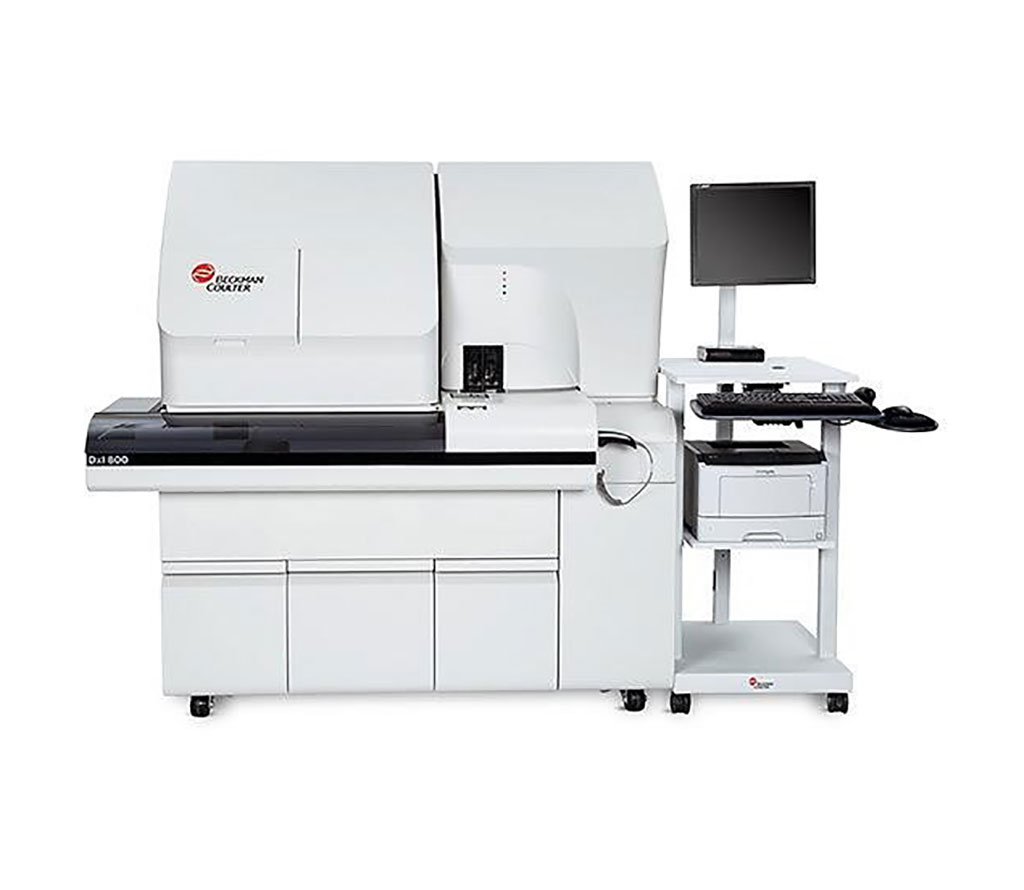Soluble Transferrin Receptor Investigated in Iron Deficiency Anemia
By LabMedica International staff writers
Posted on 25 May 2020
Anemia is a global public health problem and approximately 30% of the world's population suffered from anemia, with children and pregnant women being the most affected. Microcytic hypochromic anemia is a common type of anemia, and iron deficiency anemia (IDA) is the most common manifestation of this anemia. Posted on 25 May 2020
The current gold standard for an IDA diagnosis is iron staining of a bone marrow smear. Transferrin receptor (TfR) is a transmembrane glycoprotein. Iron is transported by binding to specific TfR‐transferrin complex and thereby released into cells. Through proteolysis, TfR produces soluble transferrin receptor (sTfR) in the serum, whose concentration is proportional to the TfR concentration.

Image: The UniCel DxI 800 Access Immunoassay System (Photo courtesy of Beckman Coulter).
Laboratory medical scientists at the Peking Union Medical College Hospital (Beijing, China) enrolled 436 subjects from March 2014 to August 2015. Among these, 118 were patients with IDA, 161 were patients with anemia of chronic disease (ACD), 60 were patients with chronic diseases with iron deficiency anemia (CIDA), and 97 were apparently healthy subjects (HS).
The scientists used the DXI 800 automatic immunoassay analyzer (Beckman Coulter, Brea, CA, USA), the Cobas c702 automatic biochemistry analyzer (Roche Diagnostics, Risch-Rotkreuz, Switzerland), and the Siemens BNII special protein analyzer (Siemens Healthineers, Erlangen, Germany) with their corresponding sTfR reagents and calibrators. The sTfR concentrations in two groups of patient specimens with high‐level and low‐level sTfR concentrations and in quality control materials were measured four times a day for five consecutive days to evaluate the precision of the three methods.
The investigators reported that for the diagnosis of IDA, the cutoff points of sTfR measured by the chemiluminescent, immunoturbidimetric, and immunonephelometric assays were 2.91, 6.70, and 2.48 mg/L, respectively. The corresponding sensitivities were 85.59%, 85.59%, and 85.59%, the specificities were 91.47%, 90.31%, and 90.70%, and area under the curve was 0.943, 0.944, and 0.936, respectively. The sTfR concentrations measured by the different methods were significantly higher in the IDA and CIDA groups than in the other two groups.
The authors concluded that the different sTfR measurement methods showed similar diagnostic value in diagnosing iron deficiency and identifying whether ACD was combined with iron deficiency. However, there were large differences in the measurement results obtained with the different methods, and their cutoff points also varied. Therefore, when sTfR is used in the course of clinical diagnosis and treatment and to establish relevant diagnostic criteria and guidelines, clinicians should pay attention to the differences in the results between different measurement methods. The study was first published on April 22, 2020 in the Journal of Clinical Laboratory Analysis.









 Analyzer.jpg)



